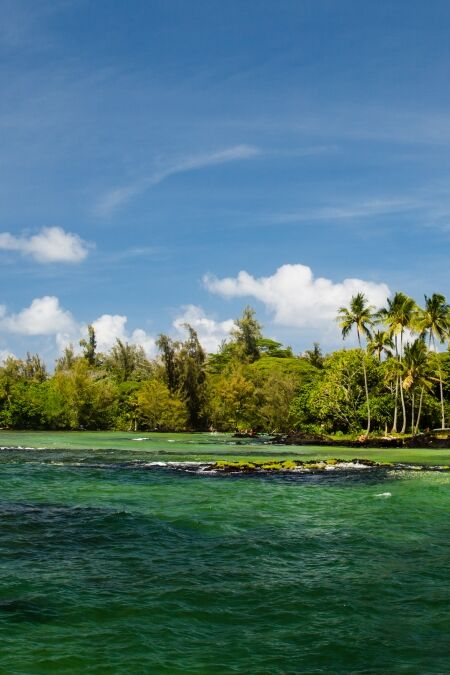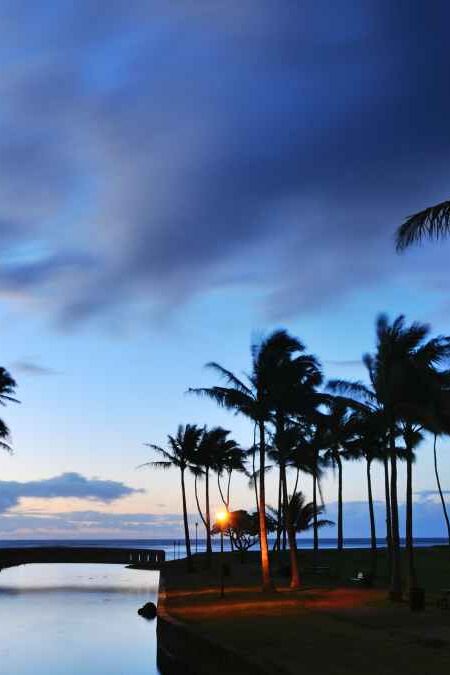Hookena Beach Park, on the southwestern coast of the Big Island of Hawaii, offers a picturesque blend of sandy shores and crystal-clear waters. Once a bustling village for Native Hawaiians, Hookena still echoes with the rich traditions and stories of its past. In this travel guide, we will explore the best ways to reach Hookena Beach Park, delve into its historical and cultural background, highlight various activities and amenities, introduce nearby attractions, and provide essential tips for making the most of your visit.
Highlights
- The clear, calm waters are ideal for snorkeling and swimming, providing visitors with an opportunity to see vibrant coral reefs and a variety of marine life, including colorful fish and sea turtles.
- Explore remnants of the old village, giving a glimpse into the traditional Hawaiian way of life.
- For those looking to extend their stay, Hookena Beach Park offers camping facilities right by the beach.
- Early risers can often see pods of spinner dolphins playing and jumping in the bay, making for an unforgettable experience.
- The calm waters of Hookena Beach Park are perfect for kayaking and paddleboarding. Rentals are available nearby, allowing visitors to explore the coastline and enjoy the ocean at their own pace.
History
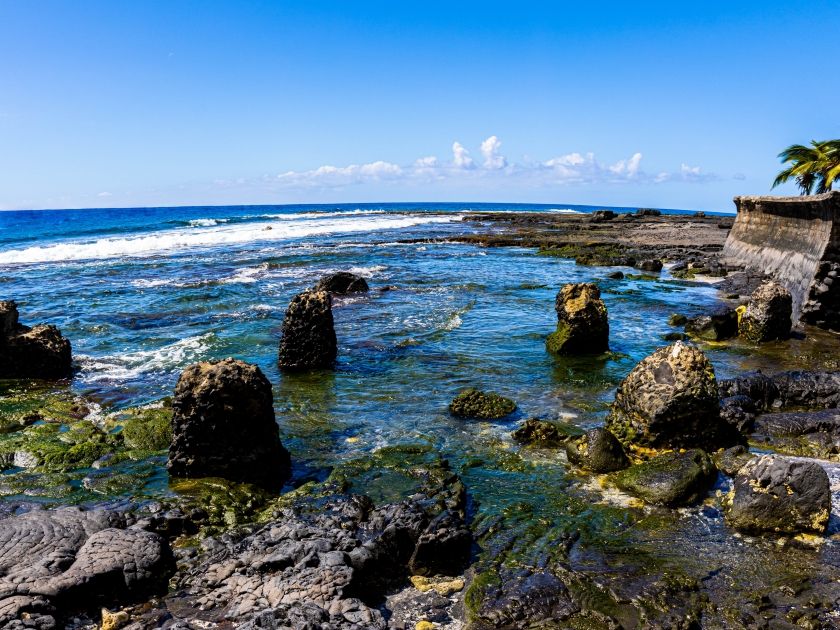
Thriving Port Town in the 1880s
In the 1880s, Hookena Beach Park was a bustling inter-island steamship mooring site, pivotal to local trade. The surrounding village flourished with a wharf, school, courthouse, livery stable, and even a jail, becoming a vibrant community hub.
A Glimpse into Hawaiian Life
This era saw Hookena favored by Queen Liliuokalani, the last reigning monarch of Hawaii, who often described the village as distinctly Hawaiian due to its large native population. In 1889, renowned author Robert Louis Stevenson visited and chronicled his experiences in “Travels in Hawaii,” further highlighting the village’s charm.
Decline and Transformation in the Early 20th Century
The advent of automobiles and trucks in the early 20th century marked the decline of Hookena as a port, rendering inter-island steamships obsolete. Coupled with natural disasters like storms and high surf that damaged the landing, many residents relocated inland, seeking better accessibility and safety.
Legacy Lives On Today
Presently, Ho’okena Beach Park not only offers a beautiful beach experience but also retains its cultural heritage. Visitors can spot remnants of the old commercial steamship pier and witness local Hawaiian canoe fishermen practicing traditional methods, maintaining a tangible connection to the area’s historical roots.
Things to Do
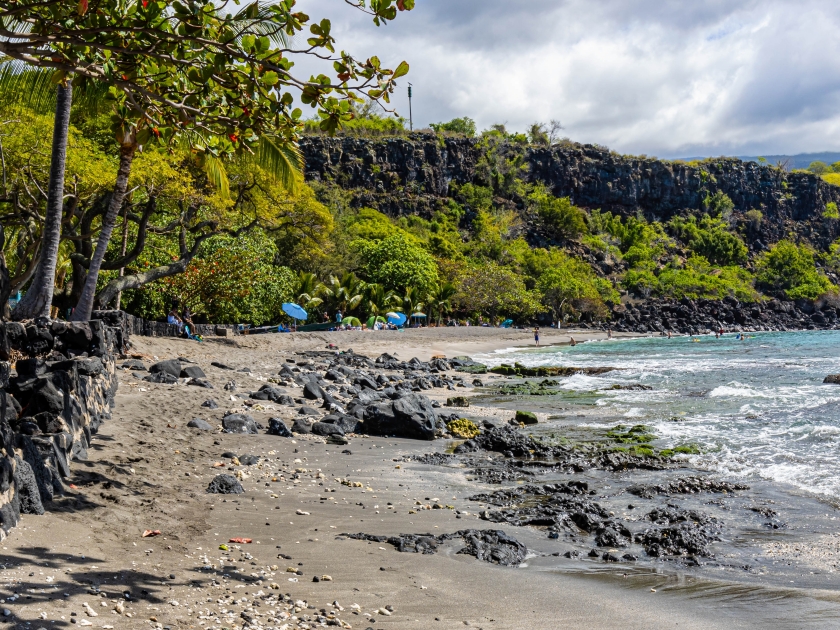
Swimming and Snorkeling
Hookena Beach Park is a paradise for swimmers and snorkelers, with its calm, clear waters providing the perfect conditions for a refreshing dip or an underwater adventure. The best spots for swimming are near the shoreline, where the waves are gentle and the water is shallow. Snorkelers can explore vibrant coral reefs teeming with marine life, including colorful tropical fish, sea turtles, and occasionally playful dolphins.
Kayaking and Paddleboarding
For those seeking a more active water experience, Hookena Beach Park offers excellent opportunities for kayaking and paddleboarding. Visitors can rent equipment from local vendors and set off on their own or join guided tours that explore the scenic coastline and hidden coves. Whether you choose to paddle solo or with a group, you’ll be treated to stunning views and the chance to spot marine wildlife.
Camping
Camping at Hookena Beach Park provides an immersive experience with nature. The park offers well-maintained campsite facilities, including restrooms, showers, and picnic areas. To secure a spot, it’s recommended to make reservations in advance, especially during peak seasons. Falling asleep to the sound of the waves and waking up to a beautiful sunrise is an experience not to be missed.
Fishing
Fishing enthusiasts will find Hookena Beach Park a rewarding destination. The park’s rocky outcrops and calm waters are popular fishing spots where you can cast your line for a variety of fish, including ulua (giant trevally), Papio (juvenile trevally), and other reef fish. Whether you’re a seasoned angler or a novice, the tranquil surroundings make for a perfect day of fishing.
Amenities and Facilities
The park features clean restrooms and showers for freshening up after a day in the sun and sea. Picnic areas and pavilions provide shaded spots for family gatherings and outdoor meals, complete with BBQ grills and cooking facilities for a delicious beachside cookout. Additionally, the park is designed with accessibility in mind, offering features that accommodate visitors of all abilities, ensuring everyone can enjoy the natural beauty and recreational opportunities Hookena Beach Park has to offer.
Nearby Attractions
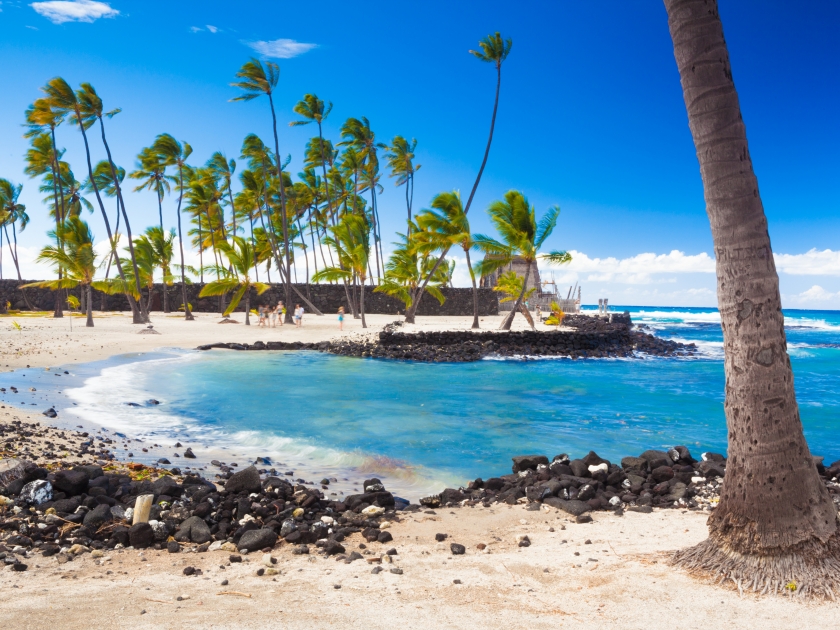
Nearby Hookena Beach Park, visitors can explore a variety of other stunning beaches and parks, each offering unique experiences just a short drive away. For example, Pu’uhonua o Honaunau National Historical Park, located about 15 minutes north, provides a fascinating glimpse into ancient Hawaiian culture. Just a bit further up the coast, Two Step Beach is a favorite snorkeling spot.
Tips for Visiting
- Always swim in designated areas and be aware of ocean conditions.
- Bring and apply reef-safe sunscreen to protect your skin and the marine environment.
- Stay hydrated by drinking plenty of water, especially on hot days.
- Keep an eye on your belongings and never leave valuables unattended.
- Respect the park’s rules and regulations, including designated camping areas and fishing guidelines.
- Dispose of trash properly and help keep the beach clean.
- Follow any posted signs regarding wildlife protection and conservation efforts.
- Arrive early to secure a good spot and avoid the midday crowds.
- Check the weather forecast and tide schedules before your visit.
- Consider weekday visits for a more peaceful experience compared to weekends.
- Engage with local guides and tours to enrich your understanding of the area’s history and ecology.
Best Times to Visit
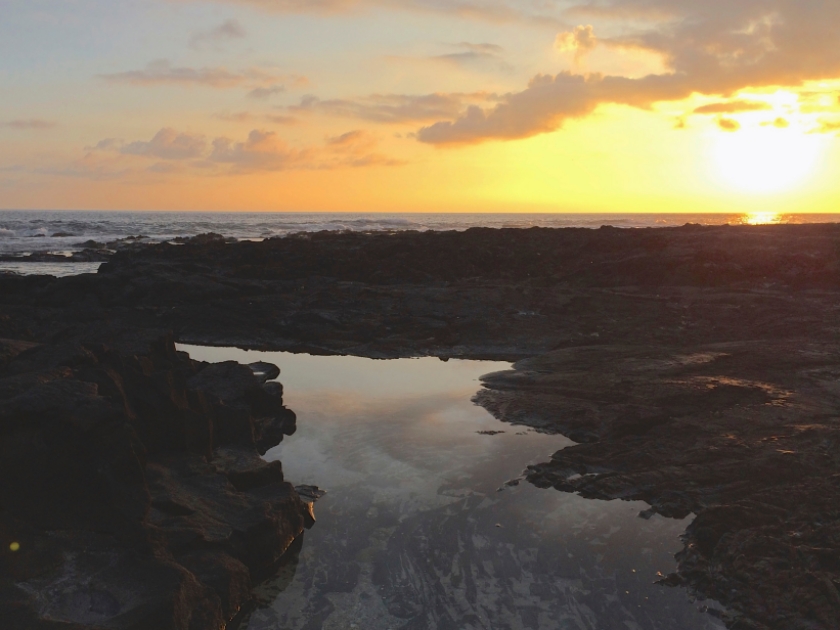
The best times to visit Hookena Beach Park are during the spring and fall seasons, from April to June and September to November, when the weather is pleasantly warm, and the tourist crowds are thinner. These periods offer ideal conditions for enjoying the park’s outdoor activities, such as swimming, snorkeling, and camping. Visiting during these off-peak times also means more availability for campsite reservations and a more serene experience overall. Always check the local weather forecast and tide schedules to ensure a safe and enjoyable visit.
Frequently Asked Questions (FAQs)
Hookena Beach Park offers amenities such as restrooms, picnic tables, showers, and a concession stand, providing visitors with convenient facilities for a comfortable beach day.
Yes, camping is allowed at Hookena Beach Park with a permit, offering a unique opportunity to enjoy the beach’s scenic beauty overnight.
Yes, Hookena Beach Park is close to several hiking trails, including the Hookena-Kealakekua Trail, which provides stunning coastal views and historical insights.
Visitors to Hookena Beach Park can enjoy activities such as snorkeling, swimming, kayaking, and dolphin watching, making it a great spot for water enthusiasts.
Yes, Hookena Beach Park is family-friendly, with calm waters suitable for children and amenities like picnic areas and restrooms that cater to families.
Yes, Hookena Beach Park is near several historical sites, including the nearby Pu’uhonua o Honaunau National Historical Park, which offers a glimpse into Hawaiian culture and history.
How to Get There
By Car
Getting to Hookena Beach Park by car is a straightforward and scenic drive. Starting from Kailua-Kona, take Highway 11 south for approximately 20 miles. As you approach the 101-mile marker, look for the signed junction for Hookena Beach Road on your right. Turn onto Hookena Beach Road and continue heading west. The road will wind through lush landscapes and gradually descend towards the coast. After approximately 2.5 miles, you’ll reach the car park at Hookena Beach Park. Remember to drive carefully, as the road can be narrow and winding.
By Bus
Reaching Hookena Beach Park by bus involves a bit more planning but is entirely feasible. From Kailua-Kona, you can catch the Hele-On Bus Route 2, which travels south along Highway 11. Disembark at the junction of Hookena Beach Road. From there, the beach park is still a few miles away, so you’ll need to either walk or arrange for a short taxi ride. Alternatively, inquire if the bus can drop you closer to the beach, as service adjustments sometimes accommodate closer drop-offs for passengers heading to popular destinations. It’s advisable to check the bus schedule in advance and plan for any additional transit time or transport arrangements needed.
Set Sail on Your Hookena Beach Adventure!
Hookena Beach Park is a treasure chest brimming with golden sands, crystal-clear waters, and a rich cultural tapestry that invites exploration. From swimming with vibrant marine life to camping under the starlit Hawaiian sky, this beach park offers a haven of activities and serene moments. Let the waves of adventure carry you to Hookena, where every visit is a journey through time and nature’s splendor. Chart your course today and embark on an unforgettable voyage to this coastal paradise!


